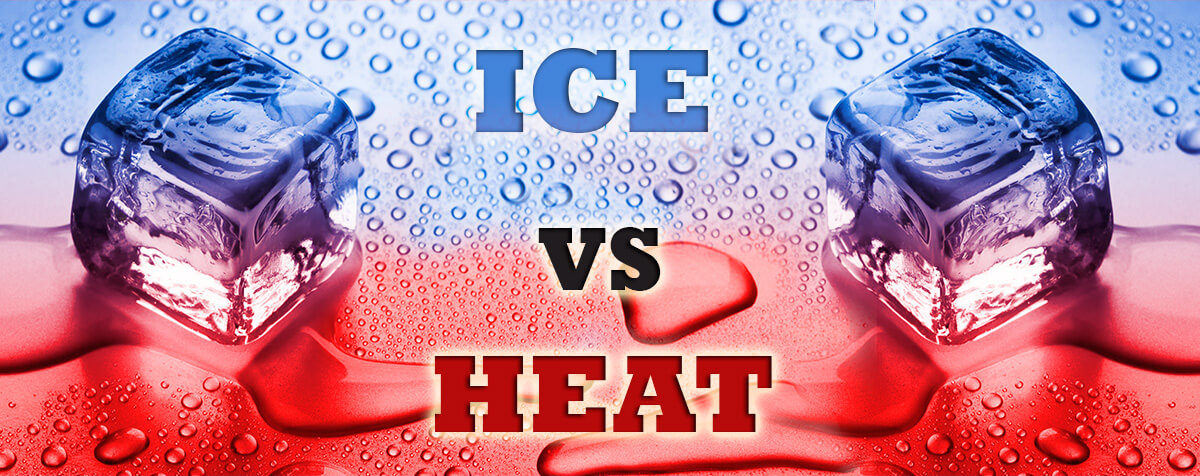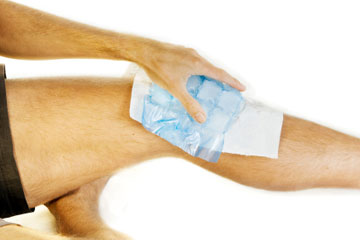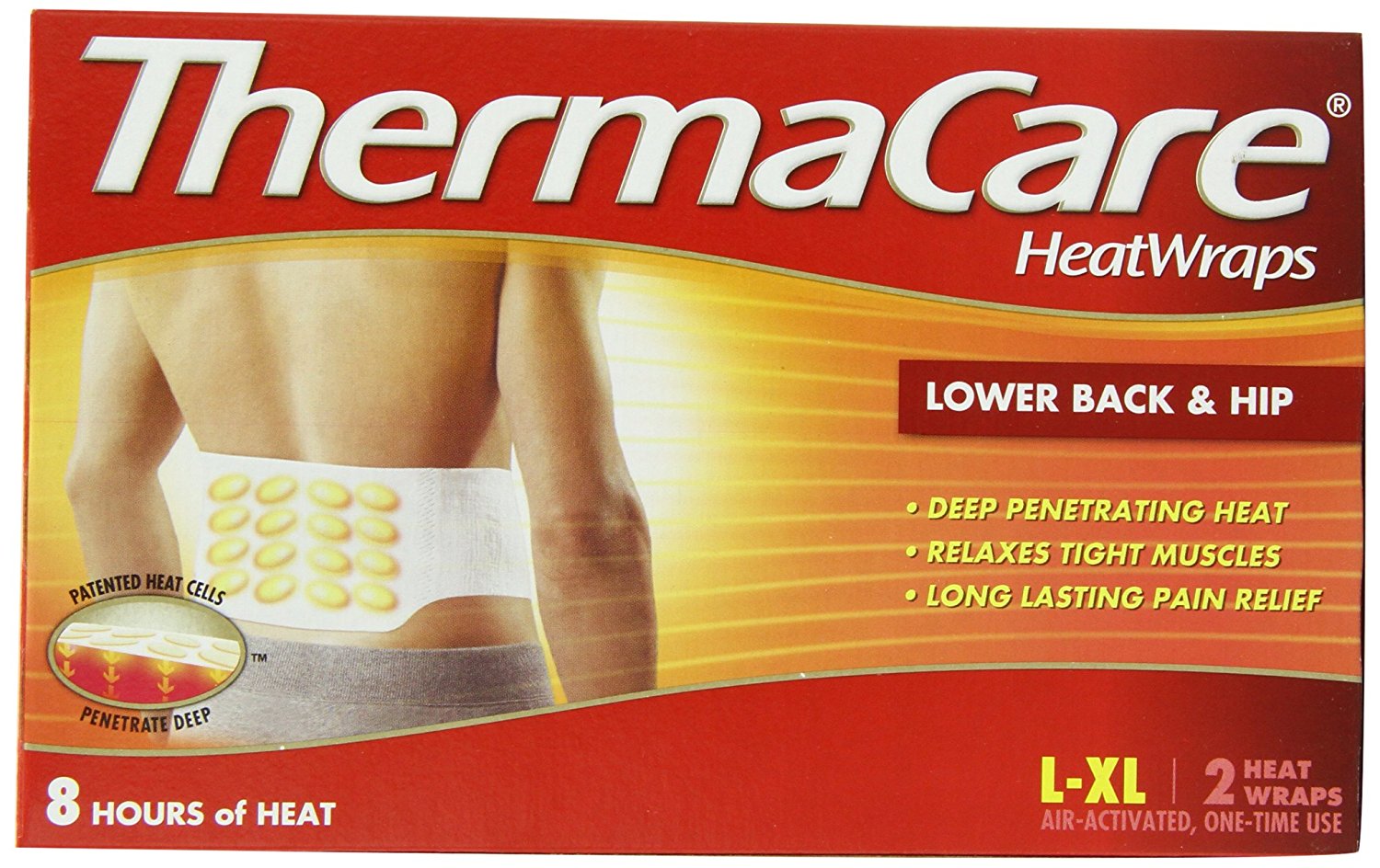If like me at this time of year you are working hard to get the most out of your body, you’ll likely also have a few niggles are even an injury to deal with!
Heck, I’m still working my way back from an injury months ago (the aging body just doesn’t want to heal like it used to!).
We all have to deal with these things from time to time—especially if we’re living the Athletic lifestyle of a Masters Athlete. Muscle pain is one of the most notorious culprits. When it hits you, it can be hard to stay motivated and keep jogging, going to the gym, or anything else you do to get fit.
How can you ease the pain and get back in the game?
Ice and heat can help—as long as you understand when and how to use them.
Most People Don’t Use Ice and Heat Treatments Properly
The idea of using ice and heat to ease muscle pain isn’t exactly new. It’s been popular for a long time. I still remember my mom shaking her head and reaching for an icepack whenever I hurt myself.
Hot and cold treatments can help, but most people don’t know how to do them properly. There’s a ton of conflicting advice out there. Everyone you ask has their own method. It’s the perfect recipe for confusion!
With muscle pain, most people mess up by:
Choosing the wrong type of treatmentChoosing the right treatment, but applying it incorrectlyA combination of these choices
It doesn’t help that “muscle pain” covers such a broad range of issues. The regular soreness that comes after a tough workout is a far cry from that pulled muscle from your last deadlift session. Heat and ice can help, but we have to adjust the treatments according to the pain.
The Best Treatment Depends on the Type of Muscle Pain
Ice or heat?
When your muscles are screaming for relief, you might not have a clear answer. A lot of people have developed a routine over the years. They tend to stick with it—without considering whether they might need to switch things up to address their current problem.
That’s why the most successful heat and cold treatments begin with a self-diagnosis of the muscle pain you’re dealing with.
Start by doing your best to identify the nature of your muscle pain. Did the pain start suddenly, maybe during an exercise? You probably have an acute injury. Some of the most common examples are muscle pulls, tears, and strains.
An injury is completely different than the soreness that comes from overexerting your muscles during physical labor, a challenging workout, or a sporting event. The biggest difference: inflammation. Injuries become inflamed immediately, so they require a different pain-management approach than common soreness.
Once you’ve gotten clear about what you’re dealing with, it’s time to figure out the best path to ease your pain.
Ice Treatments
Ice helps ease muscle pain because it constricts your blood vessels. That keeps blood from pooling at the pain’s source, which helps you avoid extra inflammation, swelling, and pain (1).
It’s important to point out that ice is an analgesic (i.e., a pain reliever). It doesn’t “fix” injuries or magically untangle painful muscle knots. But it can make the recovery process a lot less painful. You can use ice treatments just like you’d use Advil or any other over-the-counter pain medicine.
When to Use Ice
Ice works best on acute injuries, such as pulls, strains, and minor tears—wherever the affected muscle immediately gets inflamed.
Spotting inflammation is pretty simple. You’ll notice the area swell up, start to throb, and turn red and hot. Usually, you’ll know right away when you have an injury. You’ll feel a sharp, shooting pain while you’re doing something physical (or right after).
Ice works best on acute injuries, such as pulls, strains, and minor tears—wherever the affected muscle immediately gets inflamed.
Now is the time for some cold treatment.
Ice will limit the blood flow to the swollen area, saving you from the worst of the pain.
You can use it as long as the muscle remains inflamed. It usually takes between 24 and 48 hours for the swelling and redness to start to go down.
Remember the acronym RICE: rest, ice, compress, and elevate. That’s the time-tested recipe for a speedy recovery.
Once an injury is no longer inflamed, it’s time to switch over to heat treatments (more on why in just a bit). If an injury still isn’t better after a few days, it’s probably time to have your doctor take a look.
How to Use Ice
There are plenty of ways to ice your sore muscles. Some of the most popular choices are good ol’ ice cubes, bags of frozen vegetables, or specially made ice packs and gels. You could even try cold water immersion therapy.
No matter which way you do it, just make sure you don’t leave the ice on after the inflamed area goes numb. Leaving it on longer than that can actually damage your skin—and even cause frostbite! Just how long this damage takes depends on what you use to cool the muscle.
Once the injured area goes numb, remove the cold source and give your body time to warm back up. Once the inflamed area is warm and throbbing again, you can repeat the icing process. Repeat as often as needed while the area is still inflamed.
Be Careful About Pain in the Neck and Lower Back
Unfortunately, lower back pain and neck pain are extremely common. (Thanks, computer chairs!) Many people decide to ice these areas because they think they’ve injured them.
Not so fast. In actuality, you probably shouldn’t ever ice these areas.
Why not? Because it’s too easy to mistake common muscle soreness for an acute injury in your neck or back. Knots of muscle (i.e., trigger points) are common in these areas and can be very painful. They’re tough to get rid of, and they can feel like a more serious injury.
Icing an area that’s just sore can backfire. The cold can make the muscles tighter, cause stiffness and spasms, and generally make your situation even more miserable than before.
For those reasons, the safest way to treat muscle pain is with heat.
Heat Treatments
Heat works by increasing blood flow to the painful areas and slightly penetrating your tissue. This treatment helps relax stiff muscles and relieve pain.
Another important aspect of heat is that it’s psychologically reassuring, which also relieves pain. The idea of a warm shower sounds way more appealing than forcing an ice pack onto your throbbing muscle, doesn’t it? Millions of years of evolution have trained us to equate warmth with comfort zones.
When to Use Heat
Heat is the ideal treatment for the majority of muscle pains.
It can help treat minor muscle injuries that are no longer inflamed. After cold treatments alleviate the inflammation, it’s time to switch to heat—which relaxes muscles and relieves pain.
Heat can help treat minor muscle injuries that are no longer inflamed.
Heat is also great for everyday soreness that comes from sports, workouts, and other physical activities. This type of soreness might linger for a while, but you don’t want to ice it because the muscle isn’t inflamed. Heat’s a better choice for easing the tension.
A quick note on that pesky soreness that occurs after workouts: Delayed onset muscle soreness (DOMS) is extremely common, and it’s notoriously difficult to completely avoid. A dip in the hot tub or some quality time with your heating pad can lessen the pain. But as long as you work out intensely, you probably won’t be able to avoid the soreness completely. Sorry!
How to Use Heat
There are tons of treatment options available, including heating pads, bean bags, gel packs, showers, and hot tubs.
Whatever you choose, a good rule of thumb is 20 minutes on, 20 minutes off—up to three times a day. Use common sense. Don’t sleep with heating pads on overnight, or leave anything on long enough to burn yourself. A combination of treatments might help the most—such as taking a hot shower every night, then wearing a heat wrap to work during the day.
If you’re dealing with lower back pain, a lot of people do well with specially designed heat wraps or patches they can wear under their clothes. These wraps and patches ease tension throughout the day. They put out a lower level of heat, so they’re safe to use for several hours.
What If You Can’t Tell Whether You’re Injured—or Just Sore?
Muscle pain can be tricky. Sometimes it’s hard to tell whether you’re dealing with soreness, muscle knots, or a real injury.
You understand that you’re supposed to use ice for injuries and heat for everything else. But what if what you have is unclear?
There’s no need to stress about those gray areas. Because heat and ice only have a moderate effect on the soreness, choosing the wrong one isn’t the end of the world.
Let’s say your calf is bothering you after a hard run. And you landed weird at one point. What if you pulled it? But you also did some squats a few days ago. Maybe you’re just feeling a trigger point, where the muscle knotted up.
Sometimes the only way to know for sure whether to use ice or heat is to try one of them. If you try ice and it makes your muscle tense and stiff, just take the ice off and switch to heat. And vice versa.
The effect of using the wrong treatment is minor. You’ll feel it almost right away and notice things are a bit off. Then it’s easy to switch to the other treatment.
The Bottom Line
Ice and heat treatments can definitely ease muscle pain, but they aren’t an exact science.
The scientific research on this topic is seriously lacking. A good portion of the few studies out there is inconclusive. So between ice and heat, there hasn’t been an established winner. Nor has there been a protocol established for the most “ideal treatment.”
Trust your body. If you feel either ice or heat making your muscle pain worse, just stop using it.
The guidelines discussed above are just that: guidelines. With that being said, a safe and effective approach for acute injuries is treating injuries with ice until the inflammation stops, then switching to heat. Heat treatments will help with the common, everyday stuff that comes after strenuous activity.
Finally, remember that ice and heat treatments will help with pain, but they won’t cure serious injuries. If you use these treatments for a few days and your condition doesn’t improve, schedule an appointment with your doctor.








